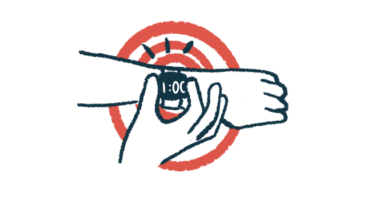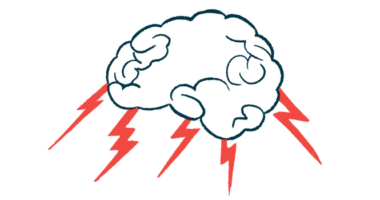Faster gains seen with home apomorphine infusion in Parkinson’s
Same efficacy as hospital initiation but better quality of life

Home initiation of under-the-skin (subcutaneous) apomorphine infusion — a treatment for motor fluctuations — is faster at improving the life quality of Parkinson’s disease patients than in hospital initiation, a French study has shown.
Continuous subcutaneous apomorphine infusion (CSAI) initiation at home for Parkinson’s was found to be feasible and to have the same efficacy and level of tolerance as in-hospital initiation, according to researchers.
“Patients in the home group improved more quickly their quality of life and became more autonomous in managing the device than those in the hospital group, and their care [cost] less,” the team wrote, adding, “This finding should make it easier for patients to access this treatment in the future.”
The study, “Feasibility and benefits of home initiation of subcutaneous apomorphine infusion for patients with Parkinson’s disease: the APOKADO study,” was published in the Journal of Neural Transmission. The work was funded by Adelia Medical, a healthcare provider that specializes in the care of patients undergoing home infusion treatment.
Parkinson’s patients ‘put off’ by length of hospital stay for apomorphine treatment
Parkinson’s is caused by the death of nerve cells that produce dopamine, a molecule responsible for sending messages between nerve cells. Dopamine is involved in the control of body movements, cognitive functions, and mood.
The progressive disease causes characteristic motor symptoms, such as tremors, slowness of movements, and muscle rigidity. It also leads to non-motor symptoms that typically include cognitive impairment, depression, and/or sleep problems.
Apomorphine is a dopamine agonist, meaning it mimics dopamine’s activity by binding to its receptor proteins; it’s used to treat the loss of body movement control.
The medication acts quickly and can be administered via subcutaneous injections — either continuously using an infusion pump, or intermittently using an injector pen (sold as Apokyn).
Usually, the initiation of CSAI — the continuous infusion — requires hospitalization of 5-10 days at a specialized center. Such an inpatient stay is needed to enable clinicians to adjust the flow rate, modify any patient oral medications, and observe possible adverse effects. It also allows patients and caregivers to get familiar with with the treatment.
However, different medical, social, and geographical drawbacks exist that can exclude some individuals with Parkinson’s from getting apomorphine infusion treatment.
“Some patients who could benefit from CSAI are put off by the wait for an appointment and the length of the subsequent hospital stay, as well as the physical distance from the nearest specialist center,” the researchers wrote.
Home initiation of apomorphine can overcome these issues, allowing greater treatment access for more patients. In this prospective study — dubbed APOKADO — researchers sought to learn more about the feasibility of in-home initiation of treatment, and to compare it with in-hospital initiation. The target parameters were efficacy, tolerability, quality of life, and costs.
The study included 145 patients with a mean age of 70.1 and mean disease duration of 11.1 years. There were more men than women (84 vs. 61), and patients had mild to moderate motor symptoms and low cognitive impairment.
In total, 44 neurologists at 32 centers participated in the study. Among them, 19 were working at hospitals (10 at Parkinson’s expert centers and nine at neurology departments) and 25 were in private practice.
CSAI was indicated for motor fluctuations for 91% of the patients and gait problems for 29%. It also was indicated for difficulty swallowing in 4.8% of participants, or while waiting for deep-brain stimulation surgery for 2.1%. Patients could have more than one indication.
The majority of patients initiated CSAI at home (106 patients), under the technical supervision of a home healthcare professional, whilee 38 initiated treatment in the hospital. Data were missing from one patient, who was excluded from the analysis.
More satisfaction reported with Parkinson’s apomorphine treatment at home
Patients were seen by the investigating neurologist at one, three, and six months after the treatment initiation to assess their clinical status, motor symptoms, and adverse events.
After six months of treatment, there was an improvement in patients’ reported quality of life: by 21% in the whole group of patients and by 32% in the home group. This improvement occurred sooner in the home group, being reported by 43.4% of the patients one month after treatment initiation, versus by 34.2% in the hospital group.
Across all timepoints, the percentages of patients who reported that their status was “much improved or very much improved” were significantly higher in those initiating apomorphine treatment at home than at the hospital. These percentages “remained stable and even increased over time,” the researchers wrote.
Moreover, significantly more patients in the home group reported being autonomous in the management of their treatment compared with those in the hospital group.
The fact that home initiation is cheaper than in-hospital initiation means that CSAI should become more accessible to patients, with the treating neurologist playing a key role in patient follow-up.
Concerning adverse events, 25% of participants reported bruising or itching at the site of injection and 33% reported small nodules, regardless of the treatment initiation modality. Nausea was reported by 20% of patients at one month after treatment initiation and by 10% at the six-month mark. This side effect did not affect treatment continuation.
Orthostatic hypotension, a sudden drop in blood pressure that occurs when a person stands up from a sitting or lying position, was reported by 16.7% of patients.
Episodes of mental confusion also were reported by around 10% of patients, and light to moderate hallucinations by 20% of patients at one month and 26.4% at six months. Three patients in the home group exhibited severe hallucinations that reverted after treatment adjustment.
Light to moderate behavioral disorders occurred in 5.3% of individuals within the first month of treatment. Also, light to moderate involuntary muscle movements, or dyskinesias, were reported by 25% of patients.
In total, 22 patients dropped the treatment — 17 in the home group, and five in the hospital cohort. The main reasons reported included loss of motivation to use the device, difficulty controlling impulses, and mental confusion.
Four patients died, three of whom started treatment because of severe difficulty swallowing and died from lung infections shortly after treatment initiation.
“The present study demonstrated the efficacy and good tolerance of CSAI, regardless of initiation modality,” the researchers wrote.
In-home treatment was less expensive than starting the therapy in the hospital. When calculating the in-hospital stay, consultations, treatment costs, patient transportation, and visits from a district nurse, the in-home treatment was less expensive by an estimated value of €11,387 (about $12,400) per patient.
“The fact that home initiation is cheaper than in-hospital initiation means that CSAI should become more accessible to patients, with the treating neurologist playing a key role in patient follow-up,“ the researchers concluded.








